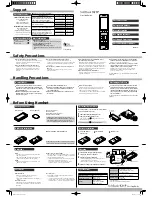
Specifications
93
CT56 Tuna am, A31008-N5300-A140-2-4A19 (14. January 2003, 12:51)
©
Si
em
en
s A
G
20
01
, G
:\M
ob
il\L
55
\C
T5
6\
am
_V
er
si
on
_2
\c
55
_a
cc
ess
or
y.
fm
Specifica-
tions
Exposure to
radiofrequency signals
Your wireless handheld portable
telephone is a low power radio trans-
mitter and receiver. When it is ON, it
receives and also sends out radiofre-
quency (RF) signals.
In August 1996, The Federal Com-
munications Commission (FCC)
adopted RF exposure guidelines with
safety levels for hand-held wireless
phones. Those guidelines are consis-
tent with the safety standards previ-
ously set by both U.S. and interna-
tional standards bodies:
• American National Standards In-
stitute (ANSI) C95.1 (1992)
• National Council of Radiation Pro-
tection and Measurement (NCRP)
Report 86 (1986)
• International Commission of Non-
Ionizing Radiation Protection (IC-
NIRP) 1996
• Ministry of Health (Canada) Safety
Code 6
Those standards were based on com-
prehensive and periodic evaluations
of the relevant scientific literature.
For example, over 120 scientists, en-
gineers, and physicians from univer-
sities, government health agencies,
and industry reviewed the available
body of research to develop the ANSI
standard (C95.1).
The design of your phone complies
with the FCC guidelines (and those
standards). For additional informa-
tion concerning exposure to radio
frequency signal, see the statement
by the FDA at the end of this user
guide.
Technical data
Trademarks
CPS is a trademark of Cambridge
Positioning Systems Limited.
GSM class:
4 (33 dBm - 850 MHz)
1 (30 dBm -
1900 MHz)
Frequency range: 824 - 894 MHz
1850 - 1990 MHz
Weight:
83 g / 2.96 oz.
Dimensions:
101x44/41x21 mm
(69 ccm)
LiIon battery:
700 mAh
Operating temper-
ature:
14 °F to 131 °F
SIM card:
plug-in 3 V / 1.8 V
Standby Time:
up to 250 hours
Talk Time:
up to 5 hours
Summary of Contents for CT56
Page 1: ......
















































